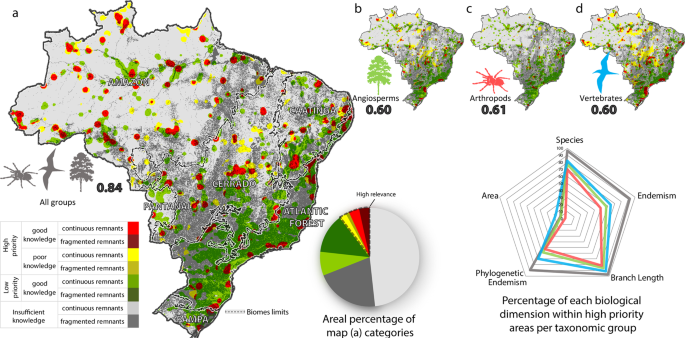
Abstract: "Traditional conservation techniques for mapping highly biodiverse areas assume there to be satisfactory knowledge about the geographic distribution of biodiversity. There are, however, large gaps in biological sampling and hence knowledge shortfalls. This problem is even more pronounced in the tropics. Indeed, the use of only a few taxonomic groups or environmental surrogates for modelling biodiversity is not viable in mega-diverse countries, such as Brazil. To overcome these limitations, we developed a comprehensive spatial model that includes phylogenetic information and other several biodiversity dimensions aimed at mapping areas with high relevance for biodiversity conservation. Our model applies a genetic algorithm tool for identifying the smallest possible region within a unique biota that contains the most number of species and phylogenetic diversity, as well as the highest endemicity and phylogenetic endemism. The model successfully pinpoints small highly biodiverse areas alongside regions with knowledge shortfalls where further sampling should be conducted. Our results suggest that conservation strategies should consider several taxonomic groups, the multiple dimensions of biodiversity, and associated sampling uncertainties."
Read More: https://www.nature.com/articles/s41598-019-42881-9
No comments:
Post a Comment